Cryogenic liquid nitrogen stands out as one of the substances at the heart of key processes in a number of industries.
Medical procedures, research initiatives in labs, industrial food processing, a wide array of industrial and electrical processes… Today, liquid nitrogen applications are diverse and far-reaching.
In this context, knowing how to get liquid nitrogen and safely store and handle it represents a crucial step for many industries. From our decades-long expertise in cryogenics, at Cryospain we share a brief guide on cryogenic liquid nitrogen.
What is cryogenic liquid nitrogen?
Cryogenic liquid nitrogen is nitrogen that is in its liquid state after having been subjected to low temperatures (below nitrogen’s boiling point, which is −196 °C or −321 °F).
A colorless liquid, it is produced by fractional distillation of liquid air, as air is made of 78% nitrogen.
Once produced, cryogenic liquid nitrogen presents a large number of applications thanks to its unique properties, including its capacity to successfully maintain cold temperatures. In order to do so, liquid nitrogen must be kept in specialized Dewar containers, which are insulated vessels designed to minimize heat transfer and maintain extremely low temperatures.
Keep learning: Maintenance and repair service for cryogenic Dewars
Properties of liquid nitrogen
- Presents an extremely cold temperature (-196 °C or -320,8 °F)
- Colorless
- Odorless
- Volatile when subject to higher temperatures
- Inert, meaning it doesn’t readily react with other elements or compounds
- High energetic density, being able to absorb big heat quantities when evaporating
These qualities enable the current wide array of liquid nitrogen uses, as they make it an exceptional cooling agent with unique properties for precise and quick freezing procedures. Additionally, it’s also these properties that make it necessary to follow strict procedures for the handling and storing of it.
Why is liquid nitrogen considered cryogenic?
Simply put, liquid nitrogen is considered a cryogenic substance because it exists at extremely low temperatures (-196 °C or -320,8 °F). At ranges of below -150 °C, substances present different behaviour patterns: their properties change, biological and chemical processes slow down or completely stop and long-term preservation can be achieved.

These patterns are studied and harnessed by the field of cryogenics, which then enables the diverse liquid nitrogen uses that are known today.
Cryogenic liquid nitrogen applications in various industries
Liquid nitrogen uses in medicine and healthcare
Liquid nitrogen uses in this field are mainly related to this substance’s capacities to reach and maintain extremely low temperatures. These include:
- Cryosurgery: the use of liquid nitrogen to freeze and destroy abnormal or diseased tissue. Useful for cutaneous lesions and certain types of tumors.
- Biological sample preservation: it’s capable of halting biological activity of tissues and cells and thus preventing their degradation. This then translates into different possibilities: from stem cell storage, to the preservation processes in reproductive technologies and storage of tissues and organs for research or transplantation.
You may also be interested in: Cryobiology: what it is and how it is applied to spacecraft propulsion
- Cryotherapy: applied for pain and inflammation relief, as well as cosmetic procedures.
- Medical research and biotechnology: cryogenic liquid nitrogen is used in research laboratories to maintain biological samples for later use in experimental studies.
Cryogenic freezer liquid nitrogen in food processing
The food industry mainly benefits from cryogenic liquid nitrogen in the following key applications:
- Fast-freezing: the low temperatures of cryogenic liquid nitrogen mean it facilitates quick, uniform freezing procedures when properly managed. Thanks to this speed, the crystals formed when freezing are smaller compared to longer freezing processes. This means food texture, taste and quality are better preserved.
- Packaging: liquid nitrogen is also employed in Modified Atmosphere Packaging (MAP). This helps preserve food by changing the composition of the air that surrounds the product, preventing microbial growth, oxidation and other issues related to the atmosphere in the package and thus extending the product’s shelf life.
- Transportation and storage: useful for maintaining optimal conditions when handling perishable food products.
- Innovative gastronomy: liquid nitrogen is also employed to innovate in restaurants and in the culinary arts in general: from artisanal ice creams, to molecular gastronomy and cocktail creation, the applications are many.
Industrial and technological applications
The unique cooling properties of cryogenic liquid nitrogen also present opportunities for a wide range of technologies and industrial processes, including:
- Control of exothermic reactions in reactors
- Assistance in gas separation

- Performing thermal stress testing in semiconductor manufacturing
- Maintenance and cleaning processes
- Heat treatments for improving the mechanical properties of metals
- Is a source of gaseous nitrogen to prevent oxidation in sensitive processes
- Provides cooling during the drilling of oil wells or tunnels.
Benefits of liquid nitrogen in the different industries
Efficiency, safety and environmental impact
Cryogenic liquid nitrogen facilitates an easy transportation and storage of dry nitrogen gas, enabling key efficiencies.
Its low temperature also optimizes freezing operations, providing a key benefit for the industries mentioned above.
The case of the food industry is a key example of this, as cryogenic liquid nitrogen enables freezing processes that take minutes instead of hours, while also improving the resulting product’s quality. These efficiencies also lead to better environmental results, including a longer shelf life that avoids food waste, while also reducing the need to employ preservatives in food or harsh chemicals in the industries.
Keep learning: What are food gases and which are the main ones?
Because it’s non-reactive, it’s also an optimal choice for guaranteeing any materials in touch with it are not altered, while also minimizing safety risks.
Cost-effectiveness in various industries
Because nitrogen is the most abundant element in air (78%), it’s readily available and thus more economical.
Cryospain: the expert in cryogenic solutions that helps you harness cryogenic liquid nitrogen
As experts in cryogenics, at Cryospain we help companies looking to incorporate cryogenic liquid nitrogen into their processes. This substance’s unique properties mean specific cryogenic storage equipment is required that provides high thermal insulation and prevents heat losses.
Put simply, liquid nitrogen storage can involve large tanks or containers or Dewars for smaller quantities. At Cryospain, we’ve developed advanced solutions for large-scale storage of cryogenic liquid nitrogen as well as a wide range of sizes for nitrogen containers for projects of a smaller scale.
Through our technical office and our top engineering teams, we can design and implement the right cryogenic tanks for each project, all while complying with recognized quality and safety standards.
Want to learn more about how to safely store cryogenic liquid nitrogen and the type of solution that aligns with your project’s needs? Get in touch with us and speak to our team about how we can help you.


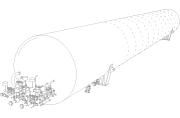
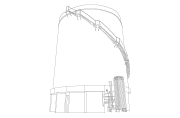
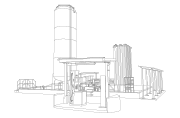
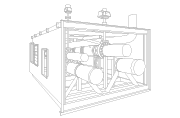
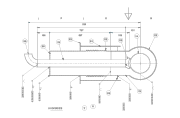
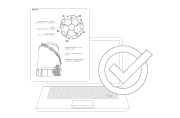



 Contacte-nos
Contacte-nos